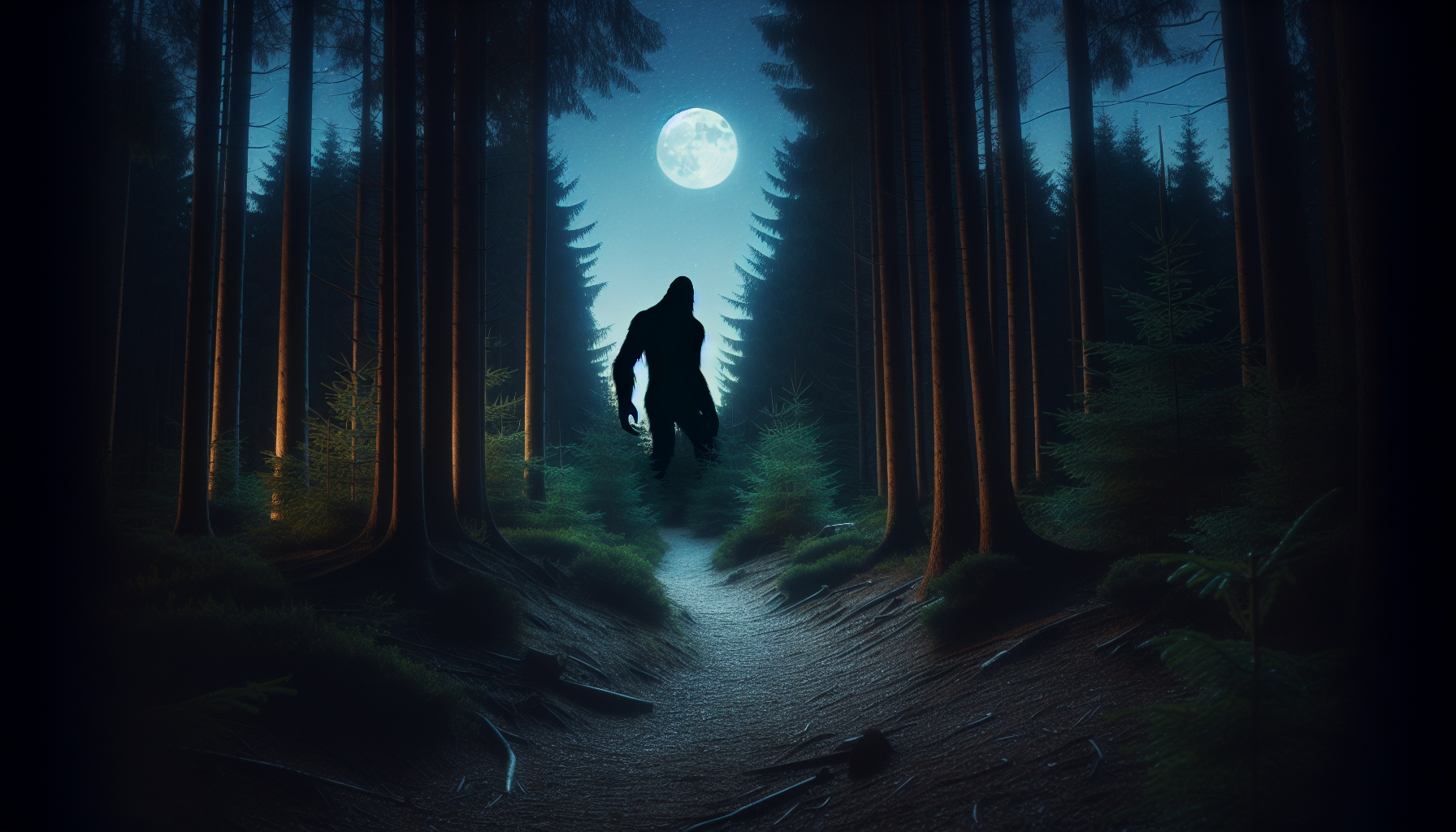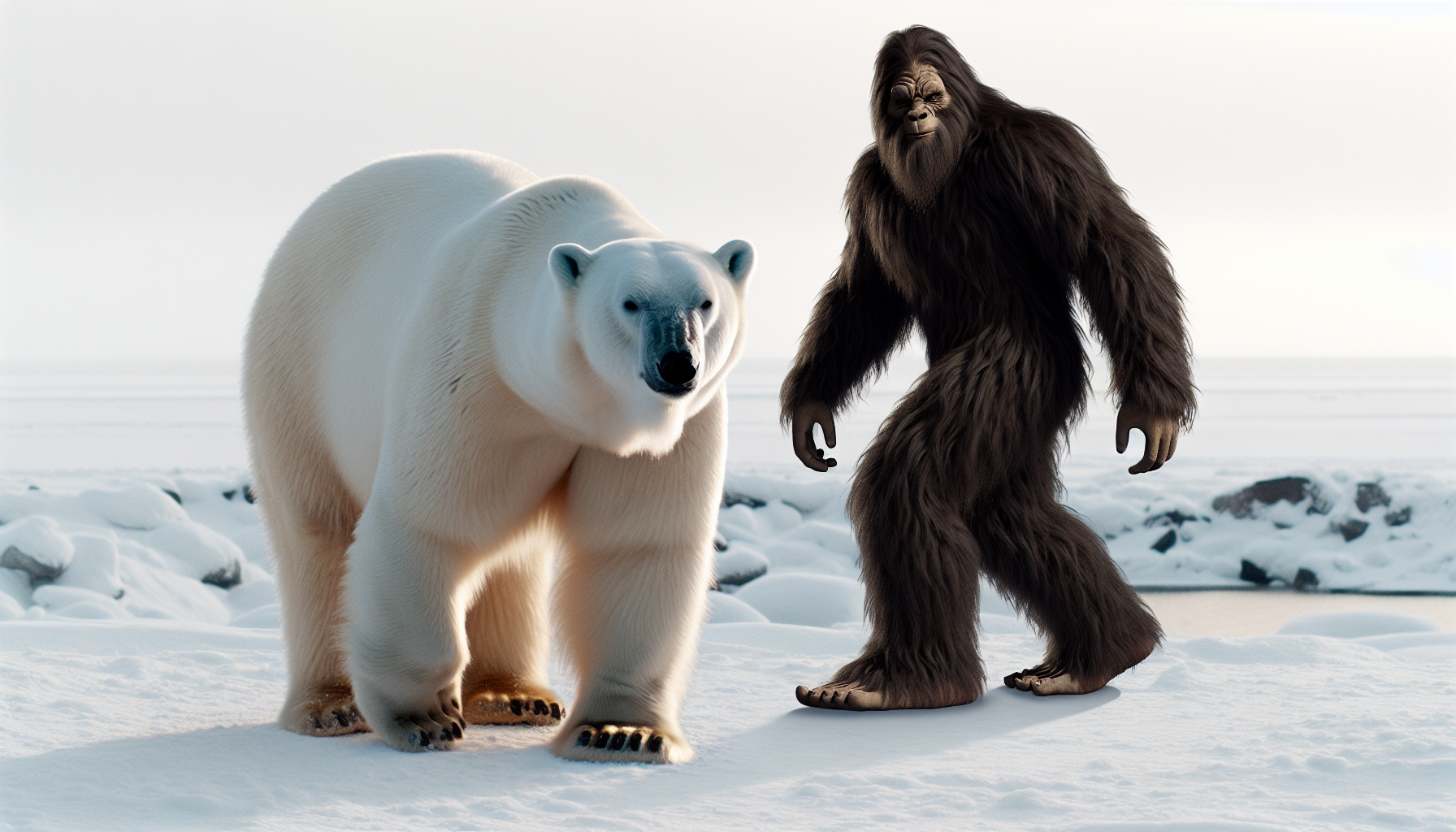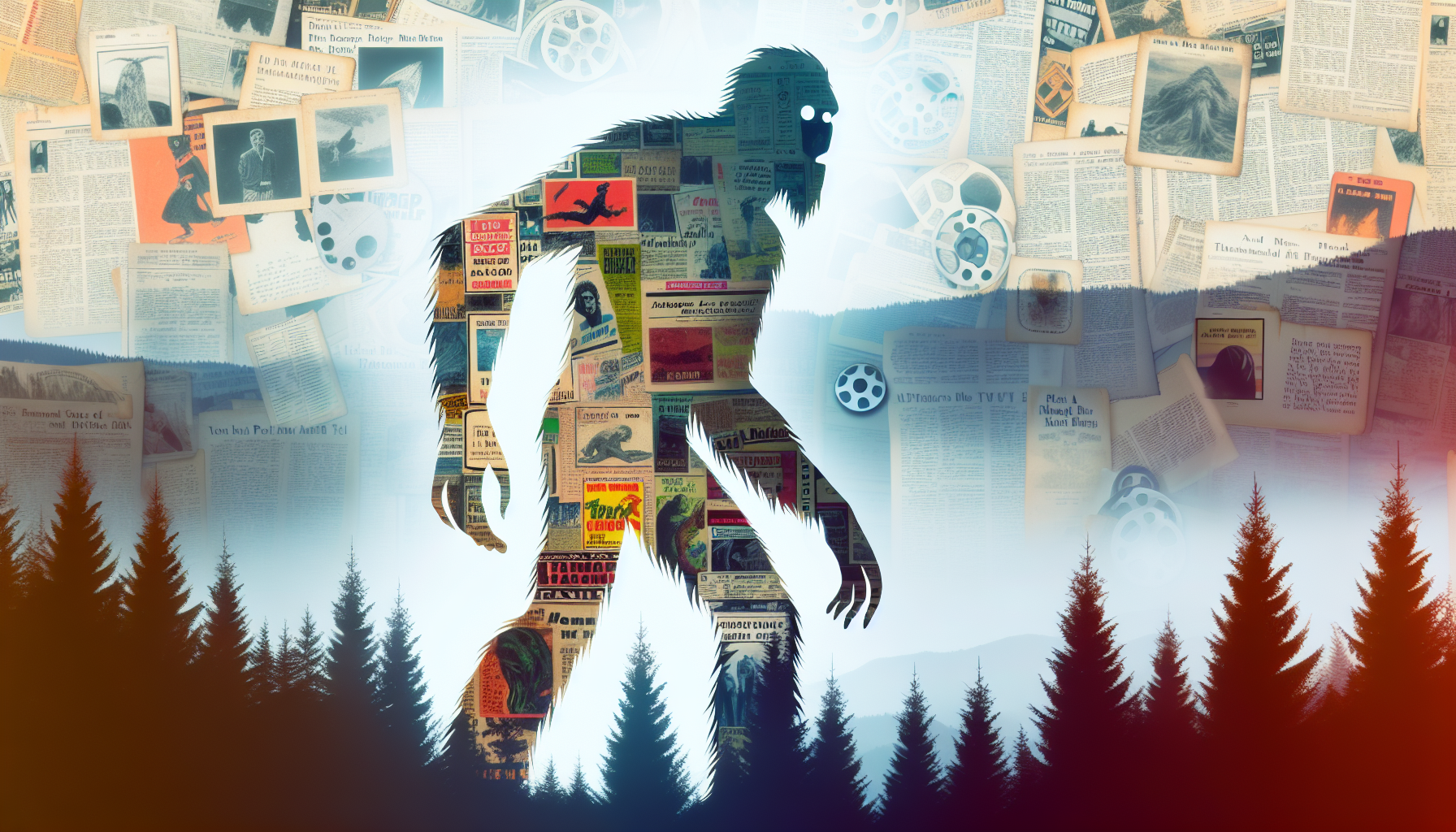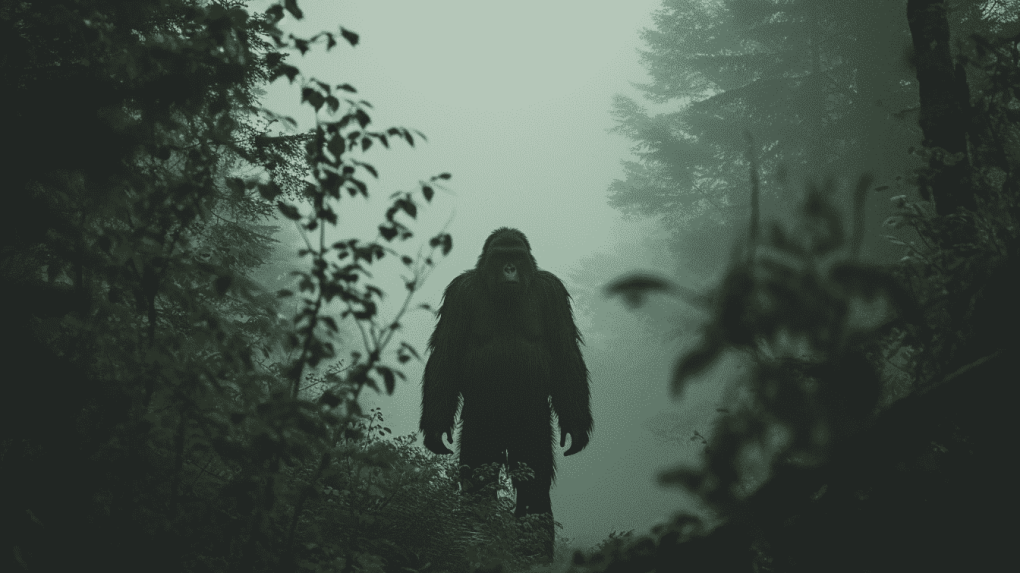The mystery of Bigfoot has captivated imaginations for decades, but is Bigfoot dangerous?
This pivotal question lies at the heart of countless tales and obsessions with the legendary creature. In this article, without sensationalizing or dismissing claims, we sift through historical encounters, critical evidence, and current understandings to directly address the safety concerns surrounding Bigfoot.
Key Takeaways
- Bigfoot sightings have a long history, primarily in North America, with evidence mostly consisting of footprints, photos, and personal accounts, though verifiable scientific proof remains elusive.
- Despite Bigfoot’s imposing stature, most anecdotal encounters portray it as more shy than aggressive, with few reliable reports of direct attacks on humans.
- Bigfoot’s public image has been shaped by pop culture and media, often humanizing the creature and contributing to the ongoing fascination and debate about its existence.
Bigfoot’s Reputation: Fact or Fiction?

Steeped in folklore, the yeti legend of Bigfoot, also known as the “Abominable Snowman”, dates back to pre-Buddhist Eastern civilizations. Originating from Sherpa communities in the Himalayan Mountains, the narrative has evolved over time to the creature we’re familiar with today. The term “abominable snowman” was coined through a translation error, adding to the creature’s mystique.
As Bigfoot’s reputation has expanded, its existence continues to baffle the scientific community. In the Himalayas, British scientists discovered a creature, but it was not the legendary beast the stories depicted.
Many reported sightings
The history of Bigfoot sightings traces back to the late 1800s, a time when North American settlers started to document their encounters with the creature. The most famed sightings include:
- The Patterson-Gimlin film
- The Marble Mountain Bigfoot sighting
- Eric Shipton’s photograph of a Bigfoot footprint in the snow
- The ‘Independence Day’ Bigfoot encounter
These sightings, many of which are centered around Washington state, have fueled the reputation of such a creature and its continued intrigue in popular culture, with some speculating about ape like creatures living in the area.
Wild man vs. gentle giant
Over the years, Bigfoot’s image has significantly evolved. Initially perceived as a ‘wild man’, the creature’s portrayal has softened to that of a ‘gentle giant’. In Native American stories, Bigfoot is seen as a spiritual figure or even as a regular creature, a stark contrast to mainstream depictions of the elusive and mysterious being.
While Bigfoot’s size could make it potentially dangerous, most reported encounters suggest the creature is more shy than threatening. This dichotomy between the wild man and the bigfoot dangerous gentle giant continues to fuel curiosity and debate about the creature.
Related: The Elusive Yeti: Fact or Fiction?
Analyzing the Evidence
The evidence supporting Bigfoot’s existence often sparks disagreements. Some experts, like Jeff Meldrum, find scientifically analyzed footprints and famous photographs, such as the Marble Mountain Bigfoot and Eric Shipton’s photograph of a Yeti footprint, to be quite convincing. However, despite some scientific studies and expert opinions suggesting Bigfoot’s existence, there’s no solid scientific proof, leading to ongoing debates.
Best evidence for Bigfoot’s existence

Evidence that strongly suggests Bigfoot’s existence includes:
- The Patterson-Gimlin film
- The Marble Mountain Bigfoot sighting
- Eric Shipton’s Snowy Bigfoot footprint
- The ‘Independence Day’ Bigfoot encounter
Recent sightings, photographs, footprints, hair samples, and audio recordings also add to the growing body of evidence.
Some of the most compelling bigfoot evidence includes giant footprints that are too large to be from a bear or human, fueling speculation of a large, bipedal creature lurking in the wilderness, as well as the discovery of an ancient polar bear jawbone. Among these findings, a purported yeti footprint has also sparked interest in the cryptozoology community.
Scientific studies and expert opinions
Respected primatologist and professor of anatomy and anthropology, Jeff Meldrum, posits the existence of an unidentified creature, possibly Bigfoot, based on available scientific evidence. Scientific studies and forensic analysis also support the possibility of Bigfoot’s existence.
However, the lack of hard, indisputable evidence leaves room for skepticism and debate.
Bigfoot Encounters: Dangerous or Harmless?

Whether Bigfoot poses a threat to humans remains a hotly debated topic. On one hand, the creature’s size potentially makes it a threat. On the other, most reported encounters suggest that Bigfoot is more shy than aggressive, often opting to retreat rather than confront.
Bigfoot’s behavior, as reported by the Bigfoot Field Researchers Organization, is similar to that of bears, particularly standing bears, adding another layer of complexity to the debate.
Attack humans: fact or myth?
Incidents of Bigfoot attacking humans are scarce. While there have been some documented cases of aggressive encounters, such as a remote cabin in Northern Ontario, Canada, being attacked, and campers being assaulted while investigating other sightings, these instances are not the norm. For those interested in learning more about these elusive creatures, the North American Bigfoot Center offers valuable information and resources.
Scientists have found no solid proof of Bigfoot attacking humans, suggesting that many of these stories may be misconstrued or fabricated.
Also read The Enigma of Bigfoot in Popular Culture
Self-defense or aggression?
Aggressive behavior by Bigfoot seems more reactive than proactive, implying a response to perceived threats rather than innate aggression. An example of this is the reported attack on miners in 1924, where rocks were thrown at them. In this case, it could be argued that Bigfoot was acting in self-defense.
Overall, evidence suggests that Bigfoot’s aggressive behavior is more likely a reaction to humans provoking the creature rather than inherent aggression.
Comparing Bigfoot to Other Large Predatory Animals
Should Bigfoot exist, it would bear many resemblances to other large predatory animals, especially regarding strength, speed, and adaptability to the wild. Like other large predators, Bigfoot’s interactions with humans can be dangerous, though this is often due more to human behavior than the creature’s inherent instincts.
Brown bear and Himalayan brown bear similarities
Both the brown bear and the Himalayan brown bear are part of the Ursidae family and share similar behaviors. They are predominantly solitary creatures, active during the day, and have a diverse diet, including:
- grass
- roots
- insects
- small mammals
- fruits
- berries
Their similar habitats and behaviors have led to some confusion in distinguishing between bear and Bigfoot sightings.
Polar bear encounters: lessons for Bigfoot

Polar bears, like Bigfoot, are not inherently aggressive towards humans. They are typically calm and spend much of their time resting. However, as with any large predatory animal, it’s essential to maintain a safe distance and avoid startling them.
While there’s no documented evidence of similarities in human encounters between polar bears and Bigfoot, polar bear encounters offer valuable lessons in dealing with large predatory animals.
The Role of Pop Culture and Media in Shaping Bigfoot’s Image
The image of Bigfoot has been significantly molded by pop culture and media. Starting with the Patterson-Gimlin film in 1967, Bigfoot’s image has been seared into public consciousness, evolving from a symbol of the untamed wilderness to a representation of nature preservation.
Movies, books, and stories have humanized Bigfoot, transforming the creature from a terrifying beast to a misunderstood giant.
You may also like The Search for Sasquatch Cryptids in Oregon
Expedition Bigfoot and other TV shows
Public perception of Bigfoot has been greatly swayed by TV shows like “Expedition Bigfoot,” which present compelling evidence and televised expeditions. From the comedic “Bigfoot and Wildboy” to the investigative “Finding Bigfoot,” the creature’s portrayal varies widely, shaping public attitudes and beliefs.
However, the authenticity and accuracy of these portrayals are subject to debate.
Bigfoot in literature and film

The portrayal of Bigfoot in literature and film is diverse. The creature has featured in genres ranging from fantasy to documentary, each adding a unique perspective to the Bigfoot narrative. From “Fantasy” by Sean Wallace to “The Winter Creek Beast” by C.P. Bialois, these depictions have significantly influenced public perception of Bigfoot.
Responsible Interaction with Bigfoot and Other Wildlife
Interacting with Bigfoot and other wildlife requires a healthy respect for these creatures and their habitats. Observing from a distance and taking precautions to protect both oneself and the environment are key to ensuring a safe and respectful encounter.
Observing from a distance
It is essential to observe wildlife from a distance to prevent causing them stress or harm. This includes using binoculars and other equipment to view animals without intruding on their space. It’s important to maintain a safe distance, generally around 25 yards for most wildlife and at least 100 yards for large predatory animals.
Don't miss Cryptid Behaviors: Understanding the Enigmatic Creatures
Protecting yourself and the environment
To safeguard yourself during wildlife interactions, precautions such as:
- group travel
- noise-making
- staying vigilant
- steering clear of areas where animals might feel cornered or threatened
are necessary.
Protecting the environment involves taking steps to minimize your impact, including staying on marked trails, respecting private property, and managing resources sustainably.
Summary
In conclusion, the question of whether Bigfoot is dangerous to humans remains unresolved. The creature’s reputation, shaped by countless reported sightings, scientific evidence, and pop culture depictions, varies widely from a dangerous beast to a shy, gentle giant. While debates continue, one thing is clear: interacting with Bigfoot and other wildlife requires respect, caution, and a commitment to protecting these creatures and their habitats.
Related Article Investigating Cryptids: The Importance of Evidence Collection and Analysis
Frequently Asked Questions
Are Yeti’s good or evil?
The Yeti is often depicted as more aggressive and dangerous in folklore, but in Tibet, they are sometimes worshipped as guardians against evil spirits. So, the belief about whether Yetis are good or evil varies depending on the cultural context.
Is the Yeti aggressive?
The Yeti is not the most dangerous cryptid, but it is often believed to be best left alone and is depicted as a more aggressive creature in fiction. It is not advisable to provoke or approach a Yeti.
What is the myth about Yeti?
The myth of the Yeti revolves around the creature being a large, hairy, ape-like bipedal being rumored to inhabit the Himalayan mountains of Asia. While many claim to have seen it, the scientific community considers it a legend.
Is the Yeti actually a bear?
The study strongly suggests that the biological basis for the Yeti myth is local bears, with the genetic study showing that most “Yeti” samples actually came from Himalayan brown bears or other native species in the area. Therefore, it can be concluded that the Yeti is not actually a bear.
Is Bigfoot dangerous to humans?
No, Bigfoot is generally not considered dangerous to humans, as it tends to be more shy than aggressive and typically retreats rather than confronts. So, you don’t need to worry about running into one on your next hike.



